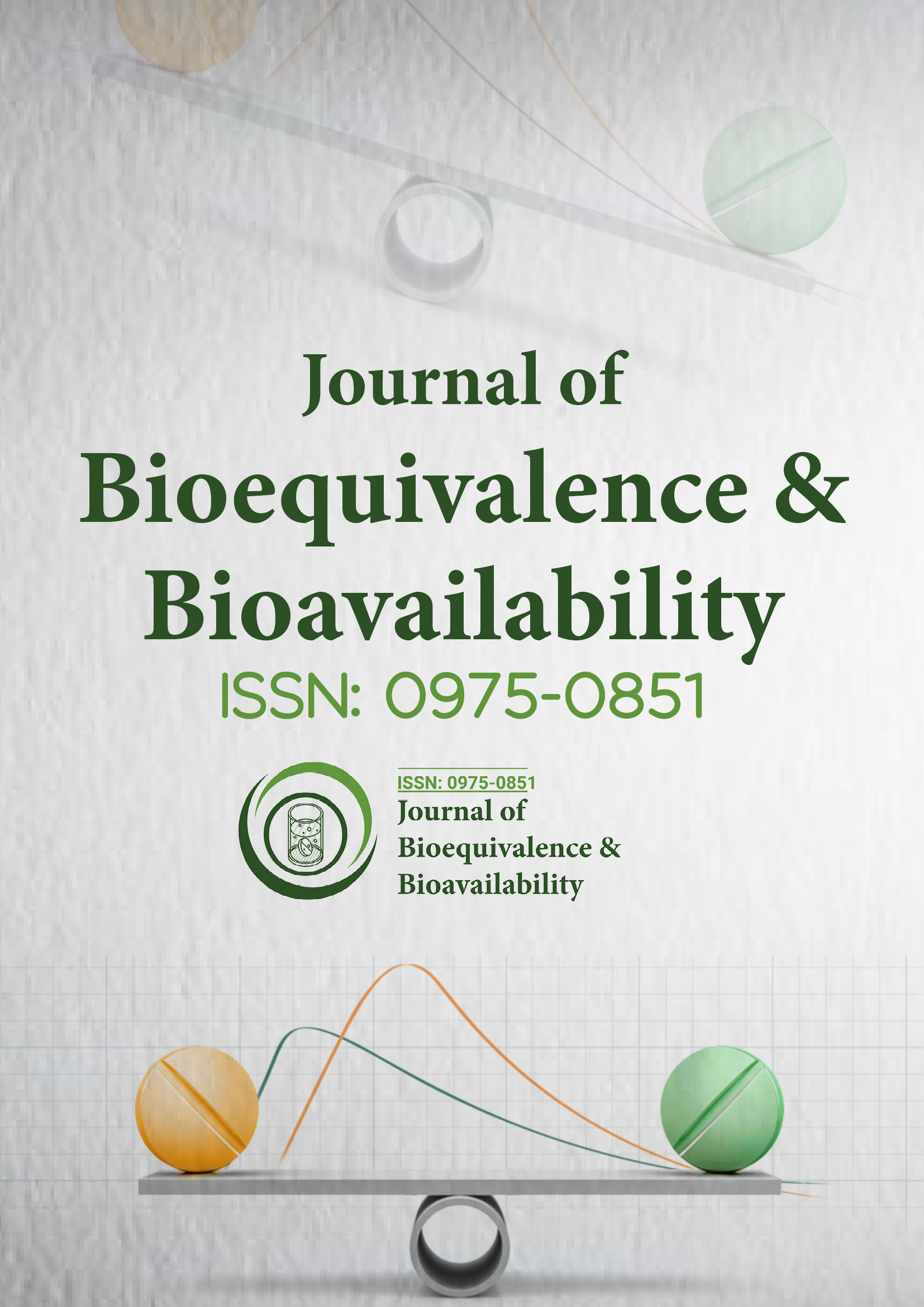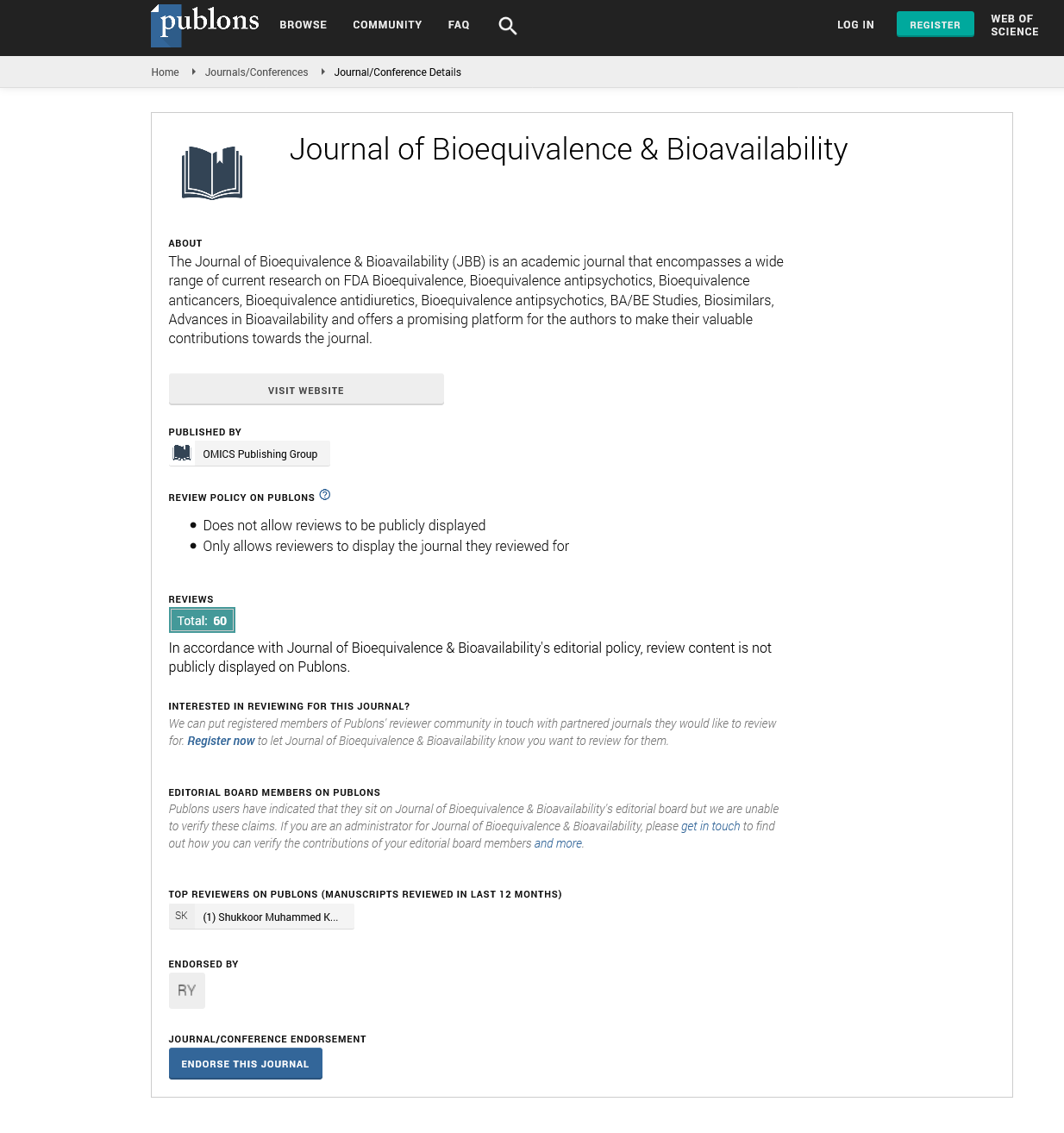Indexed In
- Academic Journals Database
- Open J Gate
- Genamics JournalSeek
- Academic Keys
- JournalTOCs
- China National Knowledge Infrastructure (CNKI)
- CiteFactor
- Scimago
- Ulrich's Periodicals Directory
- Electronic Journals Library
- RefSeek
- Hamdard University
- EBSCO A-Z
- OCLC- WorldCat
- SWB online catalog
- Virtual Library of Biology (vifabio)
- Publons
- MIAR
- University Grants Commission
- Geneva Foundation for Medical Education and Research
- Euro Pub
- Google Scholar
Useful Links
Share This Page
Journal Flyer

Open Access Journals
- Agri and Aquaculture
- Biochemistry
- Bioinformatics & Systems Biology
- Business & Management
- Chemistry
- Clinical Sciences
- Engineering
- Food & Nutrition
- General Science
- Genetics & Molecular Biology
- Immunology & Microbiology
- Medical Sciences
- Neuroscience & Psychology
- Nursing & Health Care
- Pharmaceutical Sciences
Opinion Article - (2025) Volume 17, Issue 3
The Role of Drug Interactions in Bioavailability and Therapeutic Outcomes
Chunyan Gan*Received: 28-May-2025, Manuscript No. JBB-25-30140; Editor assigned: 30-May-2025, Pre QC No. JBB-25-30140 (PQ); Reviewed: 13-Jun-2025, QC No. JBB-25-30140; Revised: 20-Jun-2025, Manuscript No. JBB-25-30140 (R); Published: 29-Jun-2025, DOI: 10.35248/0975-0851.25.17.640
Description
Drug interactions occur when the pharmacological effect of one drug is altered by the presence of another drug, food, or substance. These interactions can lead to reduced efficacy, increased toxicity, or unexpected therapeutic outcomes. Understanding drug interactions is critical for optimizing patient therapy, preventing adverse events, and guiding appropriate dosage adjustments. They are an essential consideration in both clinical practice and the development of new medications, particularly in the context of polypharmacy and complex treatment regimens.
Drug interactions are typically classified into pharmacokinetic and pharmacodynamic types. Pharmacokinetic interactions involve changes in absorption, distribution, metabolism, or excretion of a drug, altering its plasma concentration and systemic exposure. For example, the co-administration of a drug that inhibits cytochrome P450 enzymes can reduce the metabolism of a second drug, leading to elevated plasma levels and potential toxicity. Conversely, enzyme induction can accelerate drug metabolism, reducing plasma concentrations and diminishing therapeutic efficacy. Absorption interactions may occur when one drug alters gastrointestinal pH, motility, or solubility of another drug, while competition for transport proteins can affect drug distribution.
Pharmacodynamic interactions occur when two or more drugs act on the same or related physiological pathways, producing additive, synergistic, or antagonistic effects. Additive effects occur when combined drugs produce a total effect equal to the sum of their individual effects, whereas synergistic effects exceed this sum. Antagonistic interactions, on the other hand, result in a diminished effect due to opposing mechanisms. An example of a pharmacodynamic interaction is the increased risk of bleeding when anticoagulants are administered alongside Nonsteroidal Anti-Inflammatory Drugs (NSAIDs), both of which impair hemostasis through different mechanisms.
Food and dietary supplements can also influence drug interactions. Grapefruit juice, for instance, inhibits intestinal CYP3A4 enzymes, increasing the bioavailability of certain drugs such as statins and calcium channel blockers, potentially leading to toxicity. High-protein meals may alter drug absorption or compete with protein-binding sites, affecting free drug concentrations. Herbal supplements, such as St. John’s Wort, can induce drug-metabolizing enzymes and efflux transporters, reducing the efficacy of medications like oral contraceptives or immunosuppressants. Awareness of these interactions is important for clinicians and patients to prevent adverse outcomes.
Drug interactions have significant implications in special populations, including the elderly, patients with renal or hepatic impairment, and those on multiple medications. Polypharmacy increases the likelihood of both pharmacokinetic and pharmacodynamic interactions, making careful monitoring and dose adjustment essential. Personalized approaches that consider genetic polymorphisms in metabolic enzymes or drug transporters can further minimize the risk of adverse interactions. Pharmacogenomics has become an important tool in predicting individual susceptibility to interactions and tailoring therapy accordingly.
The study of drug interactions is essential for bioequivalence and bioavailability assessments as well. Co-administered drugs may alter the absorption or metabolism of test or reference formulations, affecting pharmacokinetic parameters. Understanding these interactions ensures accurate interpretation of study results and supports the development of safe and therapeutically equivalent generic products. In vitro assays, animal studies, and human pharmacokinetic trials are used to identify potential interactions before widespread clinical use.
In conclusion, drug interactions are a critical factor in drug safety and efficacy. They involve complex pharmacokinetic and pharmacodynamic mechanisms, as well as influences from diet, supplements, and patient-specific factors. Careful evaluation, monitoring, and management of drug interactions are essential in clinical practice and drug development to optimize therapeutic outcomes, minimize adverse effects, and ensure the safe use of medications. Advances in pharmacogenomics, drug monitoring, and regulatory guidance continue to enhance our ability to predict, detect, and manage these interactions effectively.
Citation: Gan C (2025). The Role of Drug Interactions in Bioavailability and Therapeutic Outcomes. J Bioequiv Availab. 17:640.
Copyright: © 2025 Gan C. This is an open-access article distributed under the terms of the Creative Commons Attribution License, which permits unrestricted use, distribution, and reproduction in any medium, provided the original author and source are credited.

